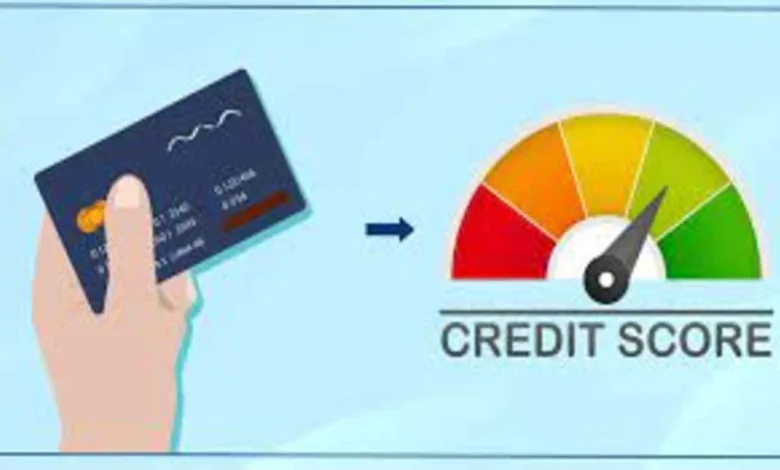How Credit Cards Impact Your Credit Score

How Credit Cards Impact Your Credit Score
How Credit Cards Impact Your Credit Score In today’s financial landscape, credit cards play a pivotal role in shaping one’s credit score. Understanding the correlation between credit card usage and credit scores is essential for making informed financial decisions. This comprehensive guide delves into the intricate ways credit cards affect your credit score, providing insights to help you navigate the world of credit responsibly.
Understanding Credit Utilization: A Key Factor in Credit Scores
Credit utilization, the ratio of your credit card balances to credit limits, holds significant weight in credit scoring models. Maintaining a low credit utilization ratio is crucial for a healthy credit score.
Credit utilization is the cornerstone of credit scoring algorithms, accounting for a substantial portion of your overall credit score. By keeping credit card balances low relative to credit limits, you demonstrate responsible credit management, positively impacting your credit score.
On-Time Payments: Punctuality Pays Off
Timely payment of credit card bills is paramount for preserving your credit score. Late payments can tarnish your credit history and lead to derogatory marks on your credit report.
Punctuality in credit card payments is non-negotiable. Late payments not only incur hefty fees but also inflict lasting damage to your credit score. Consistently paying bills on time showcases financial discipline and bolsters your creditworthiness.
Credit Mix: Diversify for Optimal Results
A diverse credit mix, encompassing various types of credit accounts, contributes positively to your credit score. Incorporating credit cards into your credit portfolio enhances its diversity and enriches your credit profile.
Maintaining a healthy mix of credit accounts, including credit cards, loans, and mortgages, demonstrates your ability to manage different forms of credit responsibly. This diversity reflects favorably on your credit score, signaling to lenders your creditworthiness and financial acumen.
Length of Credit History: The Longevity Advantage
The age of your credit accounts influences your credit score significantly. Long-standing credit card accounts bolster your credit history, portraying you as a seasoned borrower with a proven track record of credit management.
Longevity in credit accounts is a testament to your creditworthiness and financial stability. By nurturing long-term relationships with credit card issuers and maintaining accounts over time, you fortify your credit history and solidify your standing in the eyes of lenders.
Credit Inquiries: Proceed with Caution
Excessive credit inquiries can signal financial distress and raise red flags for lenders. Minimizing credit inquiries, especially within a short timeframe, is crucial for safeguarding your credit score.
Each credit inquiry leaves a footprint on your credit report, potentially impacting your credit score. Limiting inquiries to necessary credit applications prevents undue strain on your credit profile and preserves your creditworthiness.
The Impact of Credit Card Balances on Your Credit Score
The balance-to-limit ratio of your credit cards directly influences your credit score. Striking a balance between credit card usage and available credit is essential for optimizing your credit score.
Credit card balances exert a significant influence on your credit score, with higher balances relative to credit limits negatively impacting your creditworthiness. Managing credit card balances judiciously and keeping them well below credit limits fosters a positive credit profile and enhances your financial standing.
Mitigating Risks: Tips for Responsible Credit Card Usage
Practicing responsible credit card habits is paramount for safeguarding your credit score. Adopting prudent strategies can help mitigate risks and preserve your financial well-being.
Pay Bills Promptly: Timely payment of credit card bills is crucial for maintaining a positive credit history.
Monitor Credit Utilization: Keeping credit card balances low relative to credit limits is essential for optimal credit health.
Limit Credit Inquiries: Minimize unnecessary credit inquiries to prevent adverse effects on your credit score.
Diversify Credit Portfolio: Incorporate various forms of credit, including credit cards, to enrich your credit profile.
Review Credit Reports Regularly: Stay vigilant by monitoring your credit reports for inaccuracies and signs of identity theft.
FAQs
Q: Can closing a credit card affect my credit score negatively?
Closing a credit card can impact your credit score, particularly if it reduces your overall credit limit or shortens your credit history.
Q: How long does it take for credit card activity to affect my credit score?
Credit card activity typically reflects on your credit report within a billing cycle, influencing your credit score accordingly.
Q: Will applying for a new credit card lower my credit score?
The act of applying for a new credit card may result in a temporary dip in your credit score due to the associated hard inquiry.
Q: What is the ideal credit utilization ratio for maintaining a good credit score?
A credit utilization ratio below 30% is generally considered favorable for maintaining a healthy credit score.
Q: How often should I check my credit score?
Regular monitoring of your credit score, ideally on a quarterly basis, helps you stay informed about your credit health and detect any discrepancies promptly.
Q: Can negotiating a lower credit card interest rate improve my credit score?
While negotiating a lower interest rate can lower your financial burden, it does not directly impact your credit score.
Conclusion
Understanding the intricate relationship between credit cards and credit scores is essential for achieving financial success. By adhering to prudent credit card practices and leveraging their benefits judiciously, you can bolster your creditworthiness and pave the way for a brighter financial future.
Helpful Sourcse





